The complicated history of the toilets
"Money does not smell" - this phrase is attributed to the Roman emperor Titus Flavius Vespasian, who ruled in the 1st century AD. The Emperor imposed a tax on the public restrooms of the capital, which caused criticism from his son. As a result, I received a reasonable answer that the money received in this way does not smell and remains money.
Public toilets in Rome flourished, as did the empire itself at the beginning of the first millennium. Of course, there were no complicated toilet solutions, but in the capital at some points in history there were 144 such institutions, where up to 50 people could simultaneously sit in a semicircle or opposite each other. The Romans loved to visit toilets not only for the purpose of using them for their intended purpose, but also to discuss pressing matters, rumors, conspiracies.
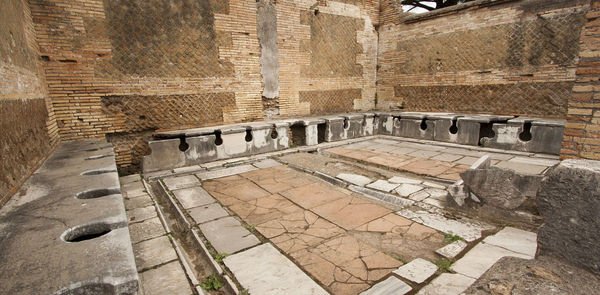
Worthy citizens sat on marble slabs, where special holes were made, under which water from aqueducts flowed along ceramic troughs, washing the sewage in the Tiber River. For personal hygiene in toilets there were special brushes (a Mediterranean sponge on a stick), which should first be thoroughly rinsed in running water, in a tank with salt water or vinegar.
The ramified sewage system of the city was improved with each ruler, and the main Cloaca Maxima (Large sewage system) at the time of Vespasian's birth had existed for more than 600 years.
In public toilets fountains (pure water) were beaten and the public from decent layers of the population gathered. Those who could not pay for the entrance to such a toilet were offered to cope with the need for vessels on the streets of the city. The tanks were then cleaned by a specially trained person. At home it was necessary to spill a night pot into the window.
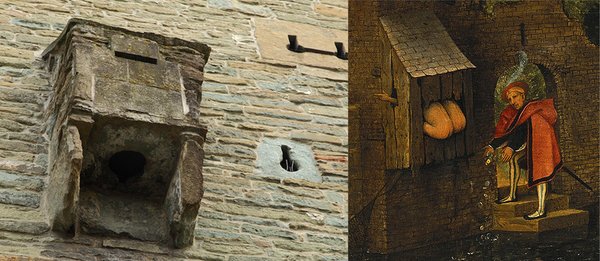
Some houses were equipped with special rooms. Walking under them should be neat.
And if in the Roman Empire the ancient toilets reached their maximum engineering level for a thousand-year history, then with the advent of the Middle Ages, there was a significant and protracted pullback. Need to celebrate where no getting, throwing waste for the walls of castles and in the gutters of cities. In cities and under houses digging cesspools for impurities. One of these pits in 1183 almost swallowed Holy Roman Emperor Frederick I Barbarossa when the floor of the Great Hall of the Erfurt Castle collapsed beneath him and his retinue. From the 12-meter height, the knights went to the cesspool. Some of them choked, but the emperor himself did not drown. Outstanding was the man. The origin of the emperor

The statue of the emperor.
The creation of the first prototypes of what can be called a toilet bowl is attributed to John Harington, who lived at the end of the 16th century at the court of Queen Elizabeth I. In 1596 he published a treatise describing the predecessor of modern toilets. It had a drain valve, which was flushed from the waste tank with water from the tank. But the invention of Harington was not widely spread: one device was mounted in his house, another John installed in the palace of his godmother - the queen and a couple of friends who decided to experiment.
The mass toilet had to wait until the industrial revolution, when the device began to take its modern form. The foundation of this lay the invention in 1775 by the Scotsman Alexander Cumming (water closet), which did not allow unpleasant, and in some places toxic and explosive gases from the sewage system to enter the dwelling. The water closet was an elegant and safe solution, which made the toilet in the house much more hygienic. The design of the closet with the siphon was patented, and numerous entrepreneurs in England began to move the device to the masses, improving and improving it.
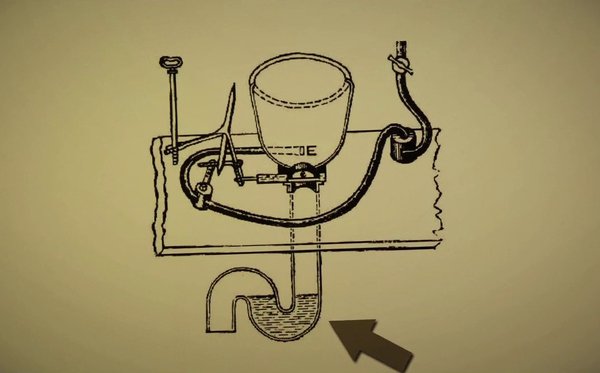
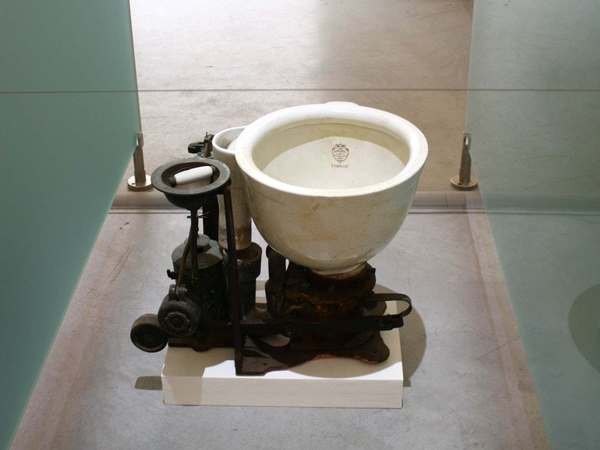
But the toilet was widely used only since 1851, when several specimens developed by George Jennings were shown at the World Exhibition. These paid public toilets were very popular among exhibitors from many countries around the world. In just two weeks, about 827,000 people took advantage of the closets, who paid a penny for privacy. The business of Jennings went uphill, and by the end of the fifties of the 19th century, the building codes of Britain had proposed that most of the new houses in the cities be equipped with water closets.
The next step in the modernization of the toilet was the creation of a clay device "all-in-one." Before that, the closets needed a wooden seat, under which, actually, there was a container with pipes attached to it, where everything fell. In the eighties of the 19th century, Thomas Twaiford introduced several models of water closets. One of them was called Unitas, which from Latin is translated as "unity". Clay Unitas was almost a genius of engineering thought of those times - it was both functional and pleasing to the eye (more expensive models were painted on the outside and inside). Like the iPhone, only in the world of Victorian toilets.
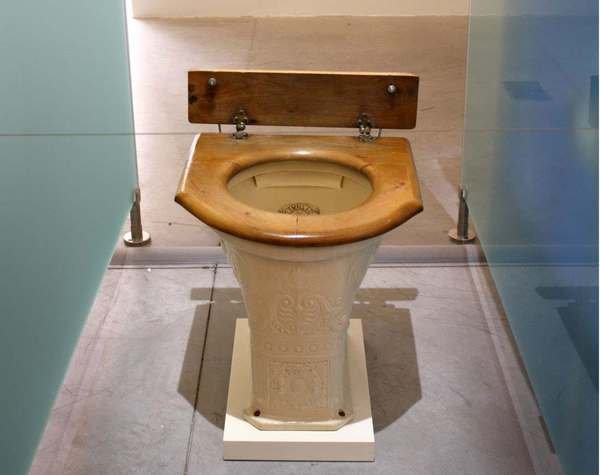
Source: http://pikabu.ru/story/neprostaya_istoriya_tualetov_4930624